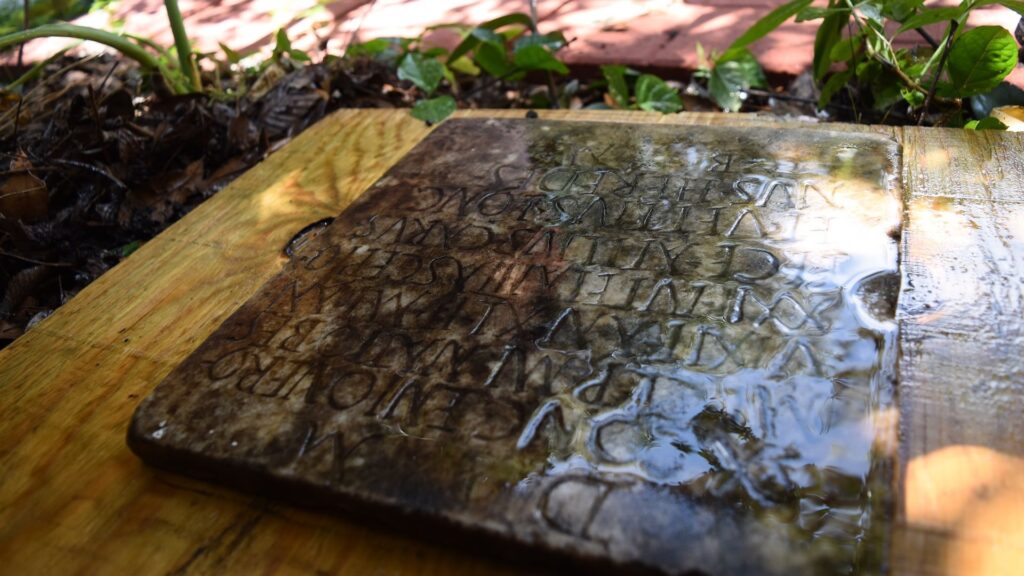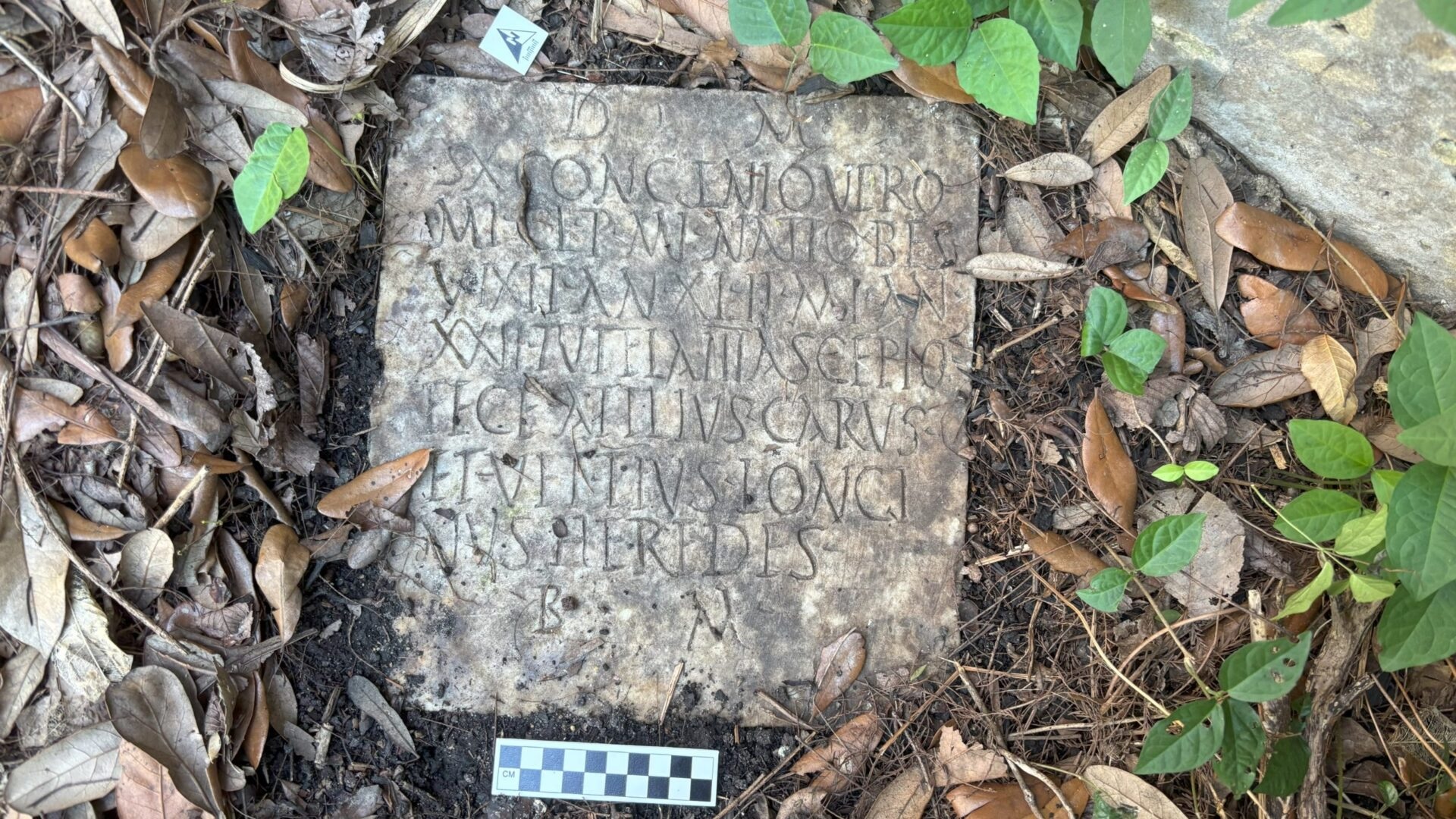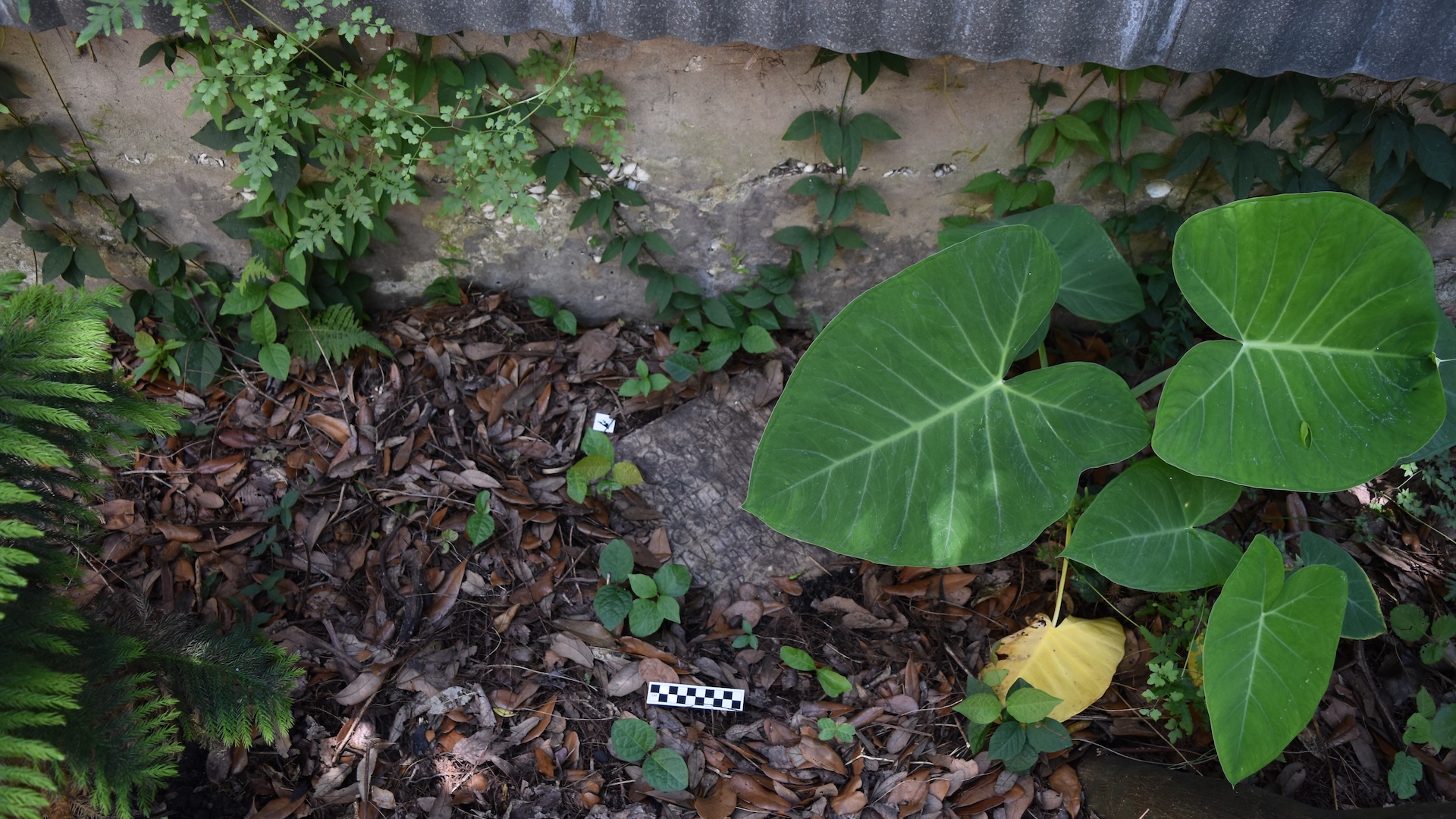One day, as the couple was mowing the underbrush in their New Orleans garden, they discovered something completely unexpected. It was a Roman tombstone that once marked the grave of a soldier who lived half a world away in the second century.
Study of an unlikely object shows it is real, and its discovery hints at an international mystery dating back to World War II.
you may like
In this case, the homeowners were Tulane University anthropologist Daniela Santoro and her husband Aaron Lorenz, Gray noted in an Oct. 6 online report about the stone investigation.
“When Daniela first described it to me, I thought maybe it was a 19th-century tombstone that had been dug up and discarded from a cemetery in New Orleans,” Gray said. “But as soon as I saw the photo of the inscription, I thought it was something completely different.”
ancient tombstone
Santoro found the unusual marble slab under the undergrowth in the backyard of his “shotgun” home in the city’s historic Carrollton neighborhood. The stone is approximately 12 inches (30 centimeters) wide and slightly longer, and one side is densely carved with Roman letters.
Experts say the Latin inscription can be translated into English and reads: “Sextus Congenius Verus, a soldier of the SS fleet Mysenensis, of Bessi descent, to the spirits of the dead.” [of Thrace](who) lived for 42 years (and) served in the military for 22 years on a trireme. [warship] Asclepius. His successors, Atilius Callus and Vettius Longinus, deserved it for him. ”
It was clear that this was the tombstone of a soldier born in the Thrace region of northern Greece who served on a Roman warship. But now a new mystery arose. How did the tombstone get to New Orleans?
The mystery that remains
Investigation revealed that the inscription had already been recorded by archaeologists, on a 2nd century tomb marker found near Civitavecchia, an ancient city and port about 40 miles (64 kilometers) northwest of Rome. However, the tombstone was reported missing after World War II, when the museum that housed it was destroyed by Allied bombing.
It’s not entirely clear what happened next, but Gray listed several ideas in his report. It may have been acquired as a souvenir by American soldiers passing through Civitavecchia after Allied forces liberated Rome in 1944. Or it could have been acquired by an antiquities dealer after the war and sold to tourists, he said. Mr. Santoro and Mr. Lorenz are currently working with authorities in the United States and Italy to return the tombstones to Civitavecchia.
“To me, this story reflects the beautiful intersection of homeowners’ curiosities that ultimately reveal something unexpected and historically significant,” Gray said in the report. “While we may never know exactly how the tombstone of Sextus Congenius Verus ended up in New Orleans, we do know that the item is now safe and on its way to being returned to a place where it can be properly displayed.”
Source link




